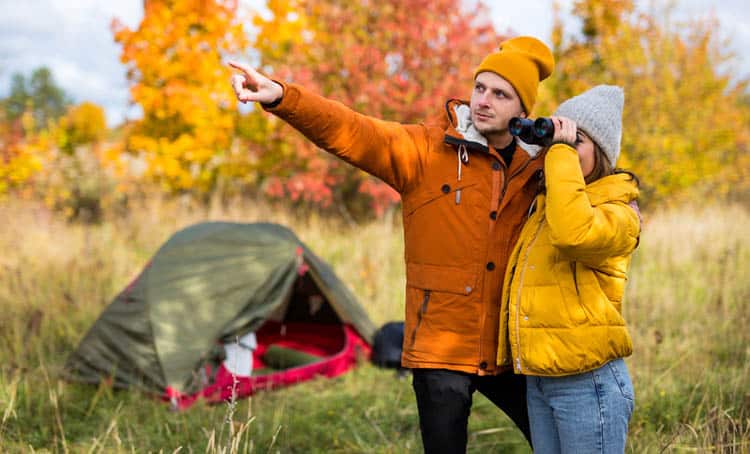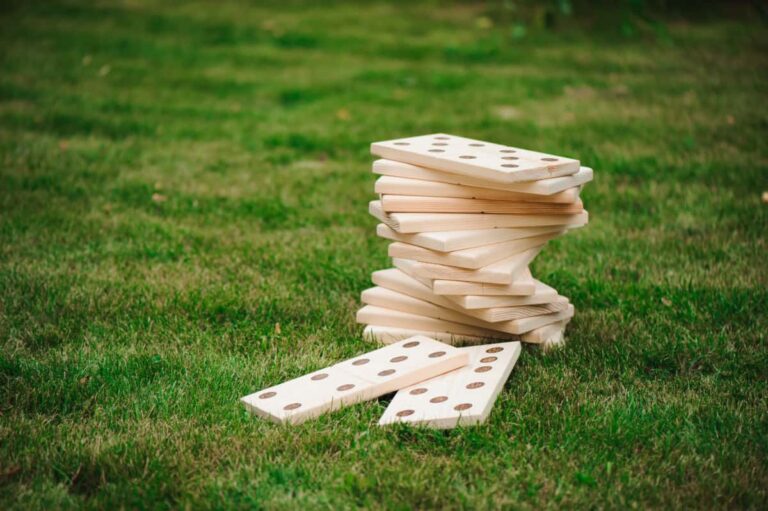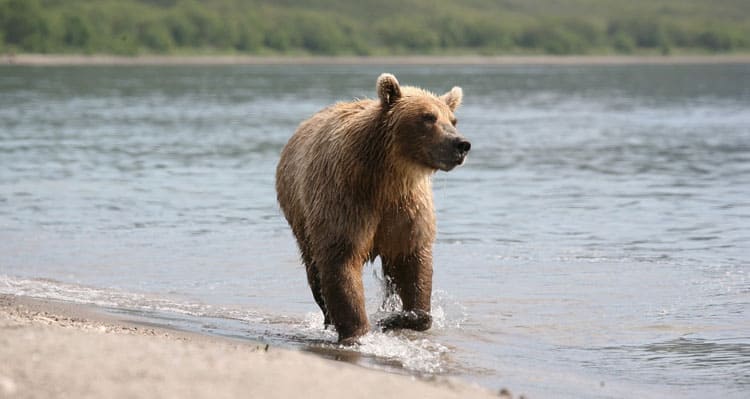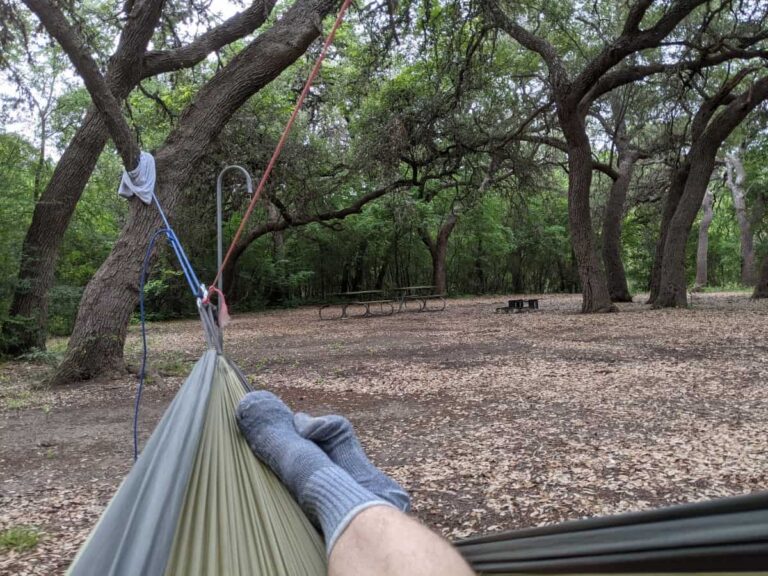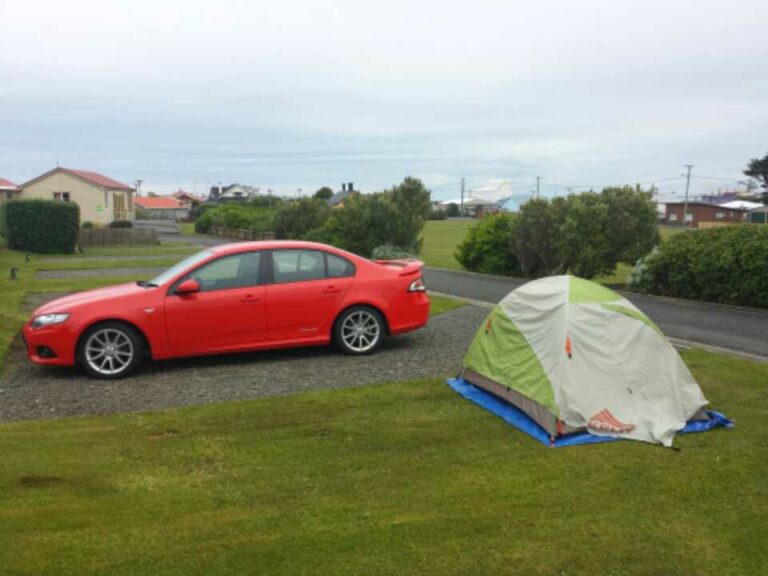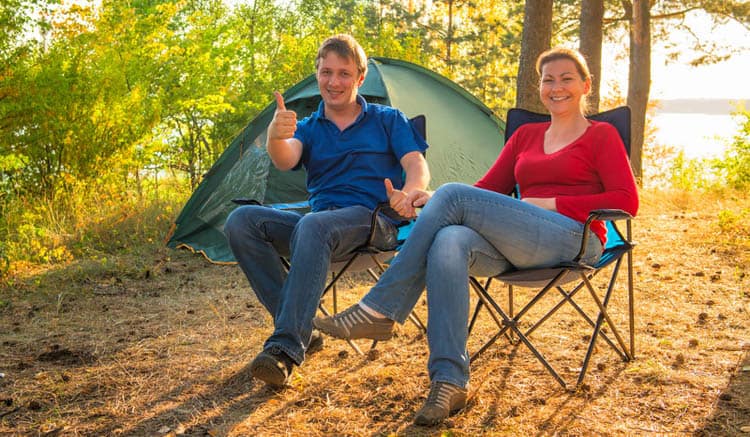Composting While Camping: Long-Term, Short-Term, How and Where
If you want to be better about your environmental impact on your next camping trip, there are plenty of options available for you.

You can compost all of your nitrogen-based (greens) materials with your carbon-based materials (browns) in a mason jar or tennis ball container for short-term camping, or in a vacuum-sealed container or bucket for long-term camping. Many National Parks have their own composting systems available for your use as well.
In this article, we will talk about how to compost in short-term and long-term camping situations, how to compost while road-tripping, and then we will talk about what composting actually is, different container ideas, what to do with human waste, what NOT to do, and more. This article should give you what you need in order to be successful in being a steward for the environment, whatever your camping style.
Short-Term Composting
This is a camping trip that is 7 or fewer days. A trip to the Rockies with some friends for the weekend, or a car camping trip to Crater Lake for a week with the family. Both of these scenarios have some specific ways you can be kinder to your environment. These include using mason jars and tennis ball containers. Both of these materials are easy to attain.
Mason Jar
As stated later, mason jars are wonderful to use for short term trips. They are small and lightweight and can be found everywhere. They also look pretty cool once you fill them up with organic material! The best thing about them is the fact that they come with a very good seal on them, so smell shouldn’t be a problem. To be safe, always feel free to bring along some tape.
Tennis Ball Container
This will be talked about later, but this is a wonderful container idea for anyone on a budget for money or for space and weight. These are lightweight, easy to find, and easy to use. Good for a small amount of composting material. Again, feel free to use tape to cover any gaps in the seal so no smell is able to escape.
Long Term
We are going to consider long term camping trips as anything longer than a week, because at this point you are going to have to seriously consider the fact that if you do not compost in the correct way and there are smells leaking out from your site that there are gonna be bears and other animals interested in what you are doing. We will focus on portable composters and toilets provided by the park service for this very thing.
Long term composting is a bit more difficult, and it seems best to rely on the resources given to you by the park you are staying at (if you are not staying at a State or National Park, composting will prove more time-consuming for you). You can also buy your own composting unit if you are willing to spend the money.
Portable Composting Unit
You can make your own or buy one on Amazon, and these can be used for either human waste or for regular composting material. It all depends on your needs. I would suggest going through Amazon to check prices because there tends to be a big difference in prices. Some units come with self-aeration and ventilation systems so you don’t have to worry about doing that yourself, and others even have a separate compartment for liquids, because as we learn later liquid in large amounts is not helpful in composting.
Envirocycle makes a 17-gallon and a 35-gallon tumbler composter.

If you were on a long-term camping trip, the 17-gallon composter would work well as it has a smaller profile (provided you have mid-sized vehicle or an RV)
The rotation of your compost is made much easier with a tumbler such as the Envirocycle, whenever you add compost, you simply rotate the tumbler and your compost continues. Tumbling reduces smell and speeds up the composting process. Check out the Envirocycle on Amazon (paid link)
Parks Pile
Most National Parks are starting to offer this device to their stewards, and it is an amazing invention. These systems are sustained by faithful (and brave) workers, so you don’t need to worry about aerating or taking care of the materials. A must-use for anyone traveling for long-term (even for people who are short term, this is a great option).
Road Trips
This last section focuses on the close-corners of using a car to camp in, and so we are focused on making sure that the little amount of food you are using does not get too smelly. This is not only for your benefit but to the benefit of the animal life around you so that another bear doesn’t need to get shot because he wanted your apple from your car that you did not hide well enough. So pay attention.
Mason Jar
As with the short term camping trip, these are relatively easy to find and easy to use. This is especially helpful for road trips because they are easy to store and usually have very good seals. They should be covered in your car and out of sight if possible.
Sealed Bucket
This is also very easy to use and cheap. Find a good bucket with a strong seal on top and apply all of your compost on the inside of the container. This will help with the smell, but your compost will decompose slower. This is what is called Anaerobic Composting. Methane gas will be formed inside the container at this time, and this is a much more potent greenhouse gas than the CO2 that is formed during Aerobic Composting that most of us are more familiar with.
This buildup of methane can actually be a bit dangerous in a very tightly sealed container, so I would suggest opening the container every few days to make sure that the build-up is given some rest. You can also aerate the container to make the process go faster by moving the materials around so there is more exposure to air for all parts of the compost.
Park Resources
There are plenty of resources available in parks like Yellowstone, Yosemite, and Grand Teton for composting. There are signs posted all around the park leading campers to closed composting piles that get picked up regularly by trucks to be part of a central composting pile. Many parks do not come equipped with composting resources, but programs such as the Zero-Landfill Initiative are starting around the United States in order to reduce waste generated by visitors.
National Parks such as the Grand Tetons are making efforts to fulfill the Zero-Landfill Initiative, and they are doing this by focusing on implementing new composting systems. Food is believed to be the majority holder of what makes up the waste stream of Teton County (Link).
Their first step was to raise awareness of the trash problem and educate the public on the situation and how they can positively impact the environment around them. This project then moved on to stage 2 – gathering the food waste from seven different collection sites from around the Grand Teton Lodge Company and bringing it to a collection facility in West Yellowstone for processing.
73.3 tons of organic material was made available to the public for gardening purposes as well as excavation and road projects around Yellowstone National Park. This huge success is leading other National Parks around the country to make available safe composting practices in order to help the environment of the parks as well as the landfills, as food that decomposes in a landfill tends to release the greenhouse gas methane.
Smell
The biggest problem that you will run into is smell. We will discuss the specifics of this later, but basically, you need to make sure that the ratio between browns (carbon) and greens (nitrogen) in your compost mixture is at the right levels. If the compost is dry and greens are not composting, that means you have too many browns. If the compost smells, then you need to add more browns to the mixture. To be safe, keep some twigs and leaves in your car to add to the mixture in the event of a smell-attack.
What is Composting?
According to a post written on this website several months ago, “Composting is the decomposition of waste using bacteria, and some form of organic carbon (i.e. the bulk material, like coconut coir, sawdust, etc…). When done properly, with the right balance of oxygen, heat, moisture and bulk material, the result is fertilized soil, free of harmful elements, like viruses.” The carbon of leaves, sawdust, paper, bark, sticks, etc will need to be balanced out by nitrogen-rich materials in order to break down, while the dry carbon material balances out the wet nitrogen materials, such as human waste, grass clippings, coffee grounds, vegetable and fruit scraps, eggshells, and many other things.
Bad Composting
You can tell you have bad compost when the mixture is either not turning into dark soil (carbon-heavy), or if the compost smells more terrible than usual (nitrogen-heavy). Compost requires the correct, cool temperature, aeration (which means turning the material inside the container so all parts are being exposed to oxygen), separation of liquids, regular emptying, and the natural balance of nitrogen and carbon. Here are a few problems you might run into.
Trapped Gas
You need to make sure that you are turning the compost regularly with some sort of device (try not to use your hand) so that there can be proper airflow for the composting organisms to grow to do what they do best. This is what is called aeration. If you do not want to do this, either do not get into composting or spend the money on a system that does it for you. Without doing this your compost will turn disgusting and smelly, and that is not ideal in the setting you are in.
Liquid
While it is important to add a small amount of liquid to a composting bin when it seems a bit dry from carbon-based materials, make sure you are not adding too much liquid to the mix of compost, because the liquid is not good for compost and it slows down the overall process. This means, in the case of composting human waste, separating urine from feces in order to have the best possible composting experience. Urine is actually at the same pH level (5-8, depending on what you drink) as what a composting bin needs, so if you notice that the pH level is a bit basic, feel free to let loose!
Temperature
Compost needs to be kept around 40-65°C or 113-149°F for the best composting to happen. Of course, it can occur at different temperatures, but it happens best at these temperatures. It may seem high, which it is, but the system of compost requires a closed system in order to trap heat inside, but that also means that aeration needs to happen in order to speed up the process as well as get rid of the smell. As quoted in another article from this site: “Composting works through organisms that feed off of the bacteria and nutrients, which generates heat. A compost can achieve temperatures of over 70°C/158°F. Heat is essential for effective composting.”
pH Level
If you start to get really serious about this, you should watch the pH levels, which should stay at a slightly acidic and alkaline pH of 5-8. This will create the most ideal situation for composting to begin. You can get a pH level testing kit from Amazon or most hardware stores.
Types of Containers
Here is a good list of different containers that you can consider to use for your next camping trip. Most of them have been talked about already, but in this section, they will be talked about in a bit more depth.
Composting Toilets
- Composting toilets are a simple way to do a whole lot of good for our environment. All it takes are two buckets, toilet paper, plenty of carbon-based materials (leaves and sticks), and hand sanitizer. You could also use another container for wastewater, but this is not completely necessary. These are used primarily to get rid of human waste, and you can either use the one provided by the National/State Park that you are staying at, or you can even bring your own. Here is an article I have written for the topic of how to make a portable composting toilet. You can even use a composting toilet as a regular composter.
Mason Jar
- This is a good container for a short term camping situation. This option is cheap, reusable, and it looks pretty cool when it’s full. Make sure that you get one with a good seal to avoid any leaks or any smells. You can find mason jars really anywhere; thrift stores, your kitchen, any shopping mall, etc. They are very nifty, and I would say for short term trips these are absolutely essential.
Tennis Ball Container
- This is another cheap option that has a pretty well-sealed top. I would suggest this container for any hikers that have read this article. This is lightweight and cheap, a backpacker’s dream. This could be made even more effective if you double-seal the top with some tape when it is full. This will help fellow campers stay up to date with federal regulations of the Leave No TracePrinciples, meaning that you are able to pack in what you are packing out.
Other Helpful Tips
- Carry Reusables
- Stay clear of plastics and try out stainless steel that can be reused over time. This will save you time and money over the years. Invest in a set of bowls, plates, flatware, mugware, and a nice water bottle you can put stickers on. You can even learn how to use refillable liquid fuel for your camp stove instead of using canisters. This will be helpful to your long-term camping experience as well as the environment around you.
- Always buy food in Bulk
- Buy as much food in bulk as your budget allows. Once you do this you can start to see money savings and become more creative with your food options. There are plenty of healthy options out there that come together in a pack, so try going to Sam’s Club or another bulk food area, so you can get food that is easy to store in your pack, especially if weight and space will be issues for you if you bring too much bulky (pardon the irony) food.
- Used Gear
- Do your best to use craigslist and thrift stores to find gear This is a fun, easy, and money-saving way to help with your impact on the environment. Ironically, there is a huge amount of waste in the outdoor clothing industry, so the more you can do to help this stop, the better. Also, most gear companies include a repair kit as well as offer amazing customer service when it comes to repairing gear or even replacing it. Make sure to exhaust all of your options before you spend hundreds to get new gear.
- Make Small Decisions
- He who is faithful in little is put in charge of much. Little life changes can go a very long way. Try to use reusable containers, pre-cut all fruits and vegetables and compost them before you leave, opting for waste-free soap and shampoo containers, and a huge amount of other options.
Human Waste
For taking care of your “business” on a camping trip, there are many options available for you, whether it be digging your own hole for nature to take its course, using the park’s resources, or even bringing along your own system.
Cat Hole
If you do not have room to bring a portable composting toilet or composter, it should be completely fine to bury your waste a foot or so down and at least 100 feet away from any body of water or structure. Make sure to bring a shovel with you to do this, especially if you out West where the ground is tougher. Remember to cover this hole up completely, or else that would ruin someone else’s day (and their favorite hiking boot). For more information be sure to check out the Leave No Trace Principles website.
Parks Toilet
If you do not have room to bring a portable composting toilet or composter, it should be completely fine to bury your waste a foot or so down and at least 100 feet away from any body of water or structure. Make sure to bring a shovel with you to do this, especially if you out West where the ground is tougher. Remember to cover this hole up completely, or else that would ruin someone else’s day (and their favorite hiking boot). For more information be sure to check out the Leave No Trace Principles website.
Portable Composting Toilet
We have an entire article dedicated to how to make your own composting toilet and an article about if composting toilets stink and what to do in order that we can avoid them being stinky. This is a wonderful option for all situations (besides hiking of course), and a relatively cheap one if you choose to try to make your own. You can also buy them at a pretty good price as well, so do what is most comfortable for you.
Conclusion
If you are even considering composting while you are going on your next camping trip, then you are on the right track. There are plenty of fun and easy ways to get better at composting and caring for the environment. It seems to me that only someone that cares for their environment as much as they enjoy spending time in it is a true outdoorsman/outdoorswoman. Use these tips for the benefit of yourselves and the environment around you.
